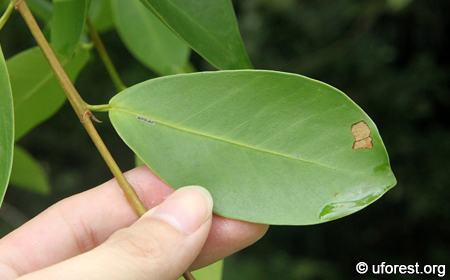| Etymology | Genus | From the Latin name for the fig (Ficus species) |
|---|---|---|
| Species | Small fruit; referring to the small synconium, though some species also possess figs of the same size | |
| Family | Moraceae | |
| Synonyms | - | |
| Common Names | Malayan Banyan, Jejawi | |
| Status | Native: Common | |
| Form | Shrub, tree, or strangler | |
| Native Distribution | Asia, Australia, and Pacific Islands | |
Diagnostics:
Ficus microcarpa is a strangling fig and one of the most common fig growing wild in urban areas. When mature it has numerious aerial roots that thicken when it anchored to the ground. Syconium
F. microcarpa is similar to Ficus benjamina, and it doesn't help when they are both very common in urban areas. However, F. microcarpa has more aerial roots, and F. benjamina have droopy foliage. Both to me are not reliable keys since they may not be present depending on their growth stage. The most diagnostic are their leaves. F. microcarpa has smooth margins with short and blunt
Interesting Facts:
Being dispersed efficiently by birds, the Malayan Banyan can be found growing on trees, from cracks of buildings or drains, or just individually as a tree. There are many huge specimens around the island, including one at the entrance of Bishan-Ang Mo Kio Park, and another at the now defunct Tanjong Pajar Railway Station.
Ficus microcarpa (left) and Ficus benjamina (right). The latter is droopy and has narrower leaves, resulting in the foliage difference with the former.

A small specimen growing on a host tree. Note the root.

Obovate leaf form, recognising it is the key to identification.

Syconium.

Numerous aerial roots hanging down from the tree along Punggol Road.

The aerial roots which thicken when anchored to the ground.
References
The aerial roots which thicken when anchored to the ground.Author: Siyang
Posted: 2013-03-01 / Modified: 2019-08-27